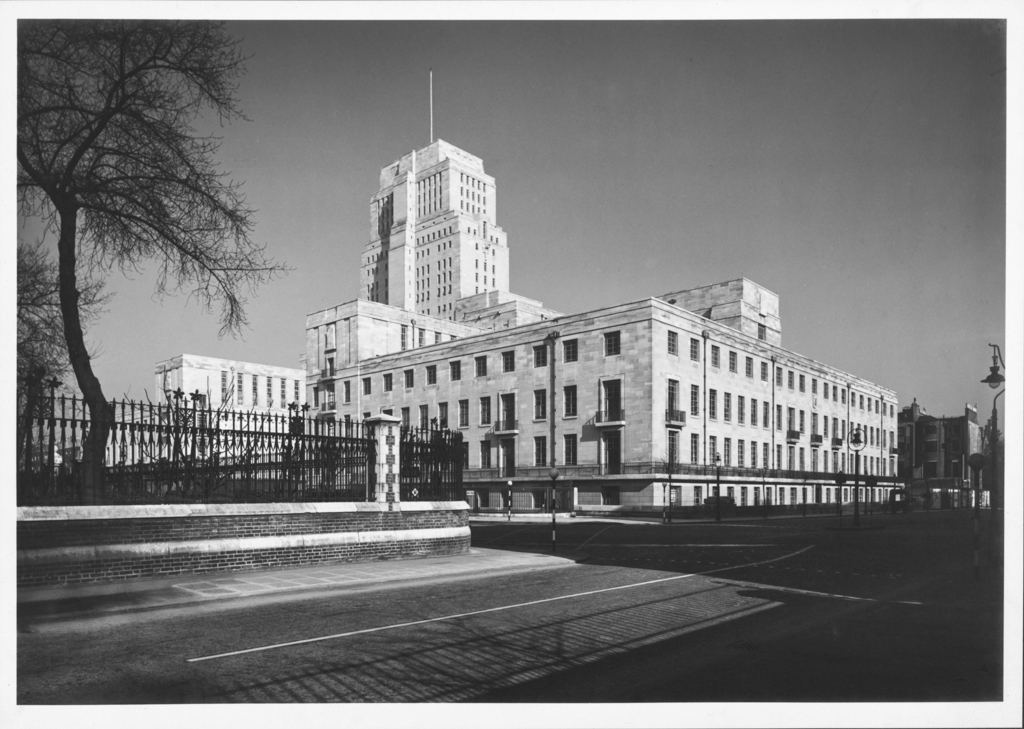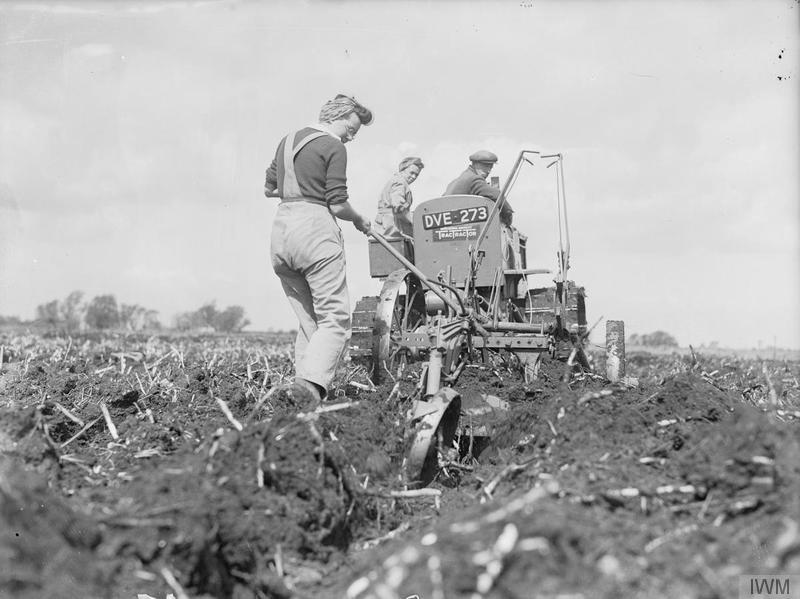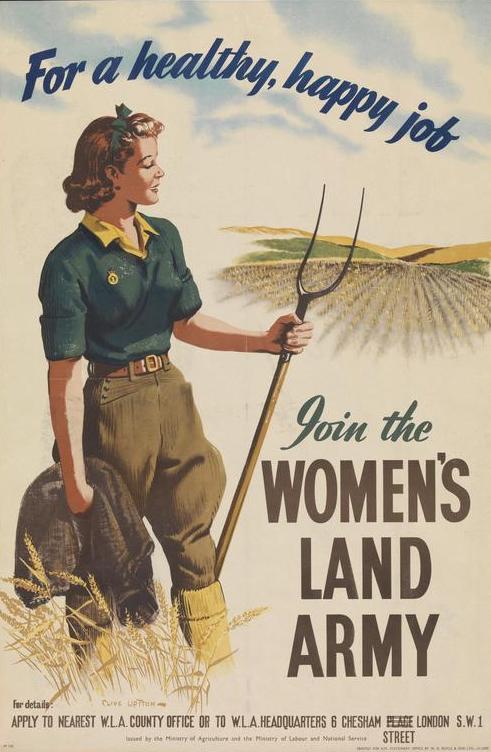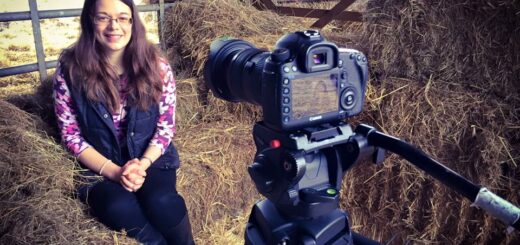“How efficiently they do their work”: responses to the MOI Land Girl Film (April 1942)
Last year, the Ministry of Information (MOI) Digital released some new documents. These were reports created by the MOI to monitor morale during the war. Naturally, with the release of new source material, I searched to see whether there was anything on the Women’s Land Army. To my delight, the search brought up the Ministry of Information Home Intelligence Special Report No.24, published in July 1942. This report looked at people’s response to films produced by the MOI – and helpful for us all today, recorded these responses to a film entitled ‘The Land Girl’.

Source: arts.leeds.ac.uk
The MOI

Formed a day after the start of the Second World War, the MOI was responsible for wartime propaganda and publicity in Britain and overseas in Allied and neutral countries. Planning for this government department began in 1935, as the government recognised that if another war was to take place, then publicity would be critical for fighting the ‘war of nerves’ felt by the British population. As part of the Ministry’s work, it commissioned the production of several films on wartime life to maintain and boost morale. Films covered the evacuation of school children, health services in London, the Women’s Institute, and even how to identify spies! As part of this process, they would invite (and watch) people view their new films and share their thoughts. The MOI would then feed this into their other productions.
The Land Girl Film
In 1942, the government released a short film entitled ‘The Land Girl’, produced by the company Paul Rotha Productions under the direction of John Page, on behalf of the MOI and the Ministry of Agriculture. Though it is not possible to view the film online, the British Film Institute (BFI) gives us the following description:
“The film is an honest tale of old-fashioned prejudice within a rural community. The chauvinism and discrimination it reveals is no doubt characteristic of its time. Its shrewd method is to allow its nameless heroine to overcome the hostility not by argument, but simply by pulling her weight with the plough. Finally the farmer is forced to concede, “we’ll make a ploughman of you yet”. Thus the film manages to challenge prejudice without generating conflict – a vital task.”

Source: IWM D 8455
The response
Out of the 24 films which the MOI had previously released, this was the first to receive such high praise for its photography, which was overseen by Graham Thomson. The shots of a Land Girl ploughing on a Scottish farm were ‘first-class’ and ‘particularly pleasing’, showcasing the beauty of the British countryside. The countryside landscape has, and continues to be, an important part of British national identity. The landscape was an important part of the film which the audience clearly appreciated.
37 people watched the film, with the majority expressing their ‘mild approval’ (out of the options warm approval, inconclusive, dislike, strong dislike). When asked about why they thought the film had been produced, viewers responded. They said it was to challenge the prejudice which women faced when working on the land, by showcasing their competency. As Ann Kramer writes, at the beginning of the war, key organisations such as the National Farmers’ Union were against women undertaking what had previously been men’s agricultural work. The National Union of Agricultural Workers took a satirical take on the Bible to justify why women shouldn’t be allowed to work on the land; Eden ‘was a successful holding utterly wrecked by the employment of women in the fruit-picking season’.

Against an atmosphere of prejudice, the film attempted to quell some of this ill feeling by showing some of Land Girl’s newly-acquired skills in action, such as shots of them ploughing. Some viewers however felt there was too much emphasis on ploughing, to the detriment of other farming tasks, such as looking after poultry, as well as women’s role in forestry.
The MOI asked whether viewers thought the film was ‘good propaganda’, essentially whether it raised morale and presented women’s war work in a positive light. Respondents did not hold back on their criticisms; 24% felt it was not good propaganda, citing the farmers ‘lack of friendliness and enthusiasm’, the loneliness of agricultural life, and the heavy and monotonous nature of the work.
In particular, the farmer’s treatment of the Land Girl sparked some comments concerning gender relations in the fields: ‘I wouldn’t like to join the Land Army and be treated like that’, with another viewer commenting how their were ‘far too many able-bodied men standing about […] watching the girl working’. It is noteworthy that the producers decided to include an overt representation of this sexism, not glossing over the realities which many Land Girls experienced while working on the land.
The Land Girl herself received some compliments from viewers as being a ‘fine strong-looking woman’ and ‘exceptional rather than average’. No doubt the production team invested a lot of effort into selecting the ‘right’ Land Girl, both in terms of her appearance, work ethic, and working relationship with the farmer. One viewer recognised that the woman in question was ‘an ideal type’ in relation to height, size, intelligence, and earnestness. (If you want to see a photo of the Land Girl in question, then head over to the BFI website to take a look, as it can’t be reproduced here.)
In summary
The MOI’s The Land Girl shows how the government recognised and responded to the prejudice which women faced when working on the land. Instead of shying away from this negativity, they challenged this discrimination head on by selecting a role-model Land Girl, who worked hard and got on with the job in land.
Find out more
The Art of War: The Ministry of Information on the National Archives
Ann Kramer, Land Girls and Their Impact (Barnsley: Pen and Sword, 2008), p.xxi & p.31


